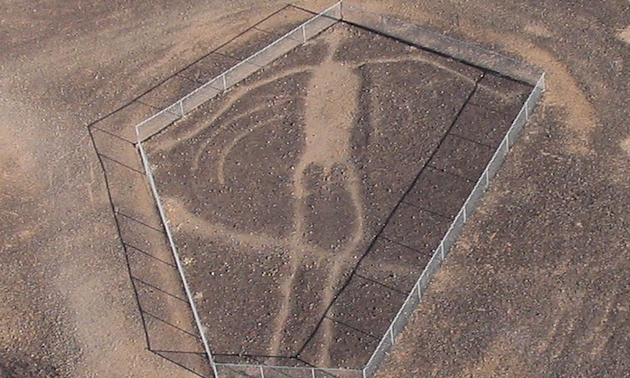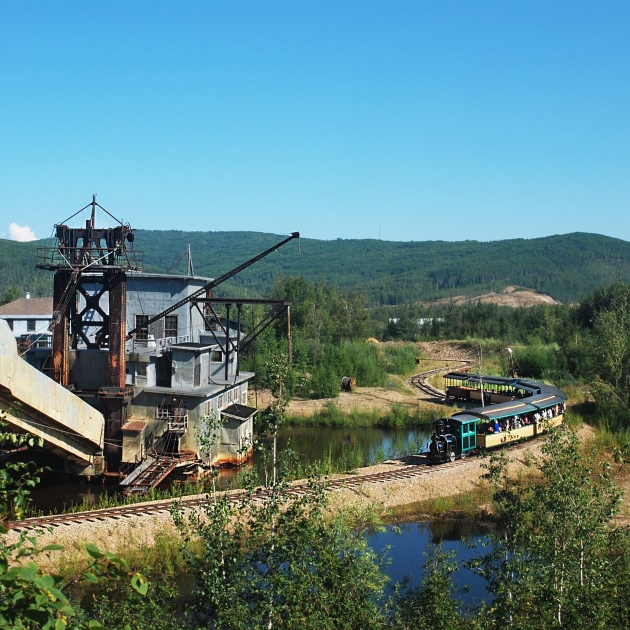The fascinating Mojave Desert rock pictures
Peru may have its famous Nazca lines, but Arizona has its own unique geoglyphs and the mystery that goes with them

Throughout the American Southwest, there are hundreds of petroglyphs and pictographs sites. A petroglyph is an engraving made on rock by pecking at or grinding the surface, while a pictograph is a painting on a rock. Both are referred to as rock art.
The most famous examples of rock art are Painted Rocks Petroglyph State Park near Gila Bend, Arizona, and the Petroglyph National Monument near Albuquerque, New Mexico. Far more rare are geoglyphs or intaglios (in-tal-yo) which are large figures found on the Colorado desert floor.
Peru’s Nazca lines
The most famous geoglyphs are found on the Nazca Plain in Peru. In 1970, Erich von Daniken wrote Chariots of the Gods. His thesis was that space aliens visited our plant and were responsible for the strange lines on the Nazca Plains to the Inca huge terrace walls at Sacsayhuaman. It also raised the question, Was God an Astronaut? Von Daniken claimed the geoglyphs could also be messages for the gods. Most archaeologists, however, claim the Nazca lines are a labyrinth, not to be seen from the sky, but to be walked for spiritual reasons.
Geoglyphs or intaglios are prehistoric figures created by removing the earth’s hard surface rock, that are covered in dark desert varnish, exposing the lighter rock just below the surface. Over 120 geoglyphs are located near the California-Arizona border from Yuma to Spirit Mountain near Laughlin or along the Colorado River. It is no coincidence that the geoglyphs are all found along the 114 degree line of longitude.
The Blythe geoglyphs
The Blythe geoglyphs are located about 15 miles (24 km) north of Blythe, California, off Highway 95. The two major geoglyphs depict both human and animal figures. Created by the ancestors of the Mojave and Quechan Indians, these gigantic glyphs, up to 171 feet in length, are probably spiritual symbols connected to the tribes’ origin and history. The two major glyphs are fenced in.
The largest male human glyph could represent the Creator Mastambo or Mustamho. Another possibility is that the male figure could be a mythological giant called Ha-ak, who ate children who misbehaved. The large animal figure is probably a mountain lion called Hatakulya who helped the Creator make the earth. It must be remembered that these glyphs were made 600 to 1,000 years ago and are subject to interpretation. There are many other glyphs in this area with names such as the Parker Snake and the Quartzsite Fisherman.
The Mojave Twins
The word Mojave (Aha MaKave) means people who live along the water, or the Colorado River. The Twins geoglyph is located between the Avi Resort and Casino near Bullhead City, Arizona, and Laughlin, Nevada. The twins are said to signify good and evil. The larger of the two figures has a large head with attached limbs, represents good and may be their God. The smaller twin
has a smaller head, detached arms and represents evil. This geoglyph is not open to the public but requires a guided tour.
Mystic Maze or Topock Maze
This Mojave Mystic Maze is very different than the Blythe Geoglyphs, but constructed in the same manner. The darker surface rock was removed, revealing lighter rocks, and parallel lines of rock create a complex maze on the desert floor. The maze is located on a relative flat area at the base of the mountains. The parallel lines are four to five feet apart and run mostly north- south but do have a few dead ends. Only about 18 acres remain of the original maze, as the railroad and later I-40 cut through the maze.
Archaeologist George Shannon of the Bureau of Land Management in Arizona believes that the maze played a significant role in the Mojave Indian life cycle. Upon their death, natives had to proceed through the maze to the afterlife. The maze could also be used for spiritual purification for the living. The Mystic Maze near Topock is south of I-40, 10 miles (16 km) southeast of Needles (Exit Park Moabi Road). Hike up the side of one of the surrounding mountains for the best view of what remains of the maze. For more information, visit the Lake Havasu Museum or the Mojave Indian Band Office in Needles.
Spirit Mountain
Spirit Mountain is located near Laughlin, Nevada and is very sacred to the Mojave Indians. The mountain is also called Newberry Peak and is 5,642 feet (1720 metres) in elevation. The mountain is the origin of the Yuman linguistic people from which the Mojave and Quechan tribes originated.
The people emerged from the mountain, the home of Mastambo, their god. Mastambo also gave the Colorado River to the Mojave and taught them to how to plant crops, catch fish, build fires and survive in the desert. Spirit Mountain is on the United States National Register of Historic Places.
Peru may have its famous Nazca lines, but Arizona has its own unique geoglyphs and the mystery that goes with them.







